Nokia N9 review
The Nokia N9 is the most interesting phone that came out of the Finnish company in years. Not only because it comes with totally different OS but also because it represents what Nokia could have become if it had done this strategy way earlier. 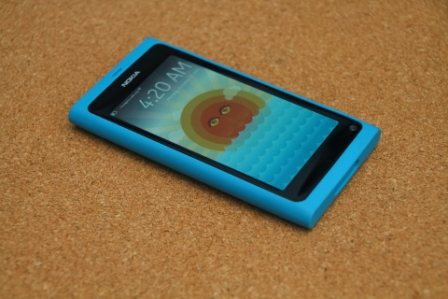 The Nokia N9‘s design did not come as a surprise. Coming from the N-series line-up, the N9 looks pretty similar to the Nokia N8 — only a bit refined and uses a polycarbonate body instead of a sturdier aluminum. While a unibody polycarbonate (read: plastic) casing isn’t as solid and durable as an aluminum one, like in the N8, it gets the benefit of a lighter form-factor and smooth, matte finish. Nevertheless, the construction of the N9 still feels pretty good that you would not mind the polycarbonate body.
The Nokia N9‘s design did not come as a surprise. Coming from the N-series line-up, the N9 looks pretty similar to the Nokia N8 — only a bit refined and uses a polycarbonate body instead of a sturdier aluminum. While a unibody polycarbonate (read: plastic) casing isn’t as solid and durable as an aluminum one, like in the N8, it gets the benefit of a lighter form-factor and smooth, matte finish. Nevertheless, the construction of the N9 still feels pretty good that you would not mind the polycarbonate body. 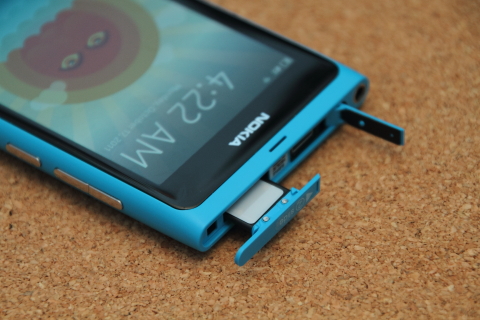 The micro-USB port is hidden on the top by a small enclosure that pops up with a slight press on one side. The micro-SIM card slot is beside it with a cradle that pulls out after sliding the cover towards the left (you will need to open the USB compartment before you can do this). The 3.5mm audio port is posted on the other end. The volume control is placed on the right side along with the power/lock/wake button. Aside from that, there are no other ports or buttons on the device. The front-facing camera is oddly positioned on the lower right side of the front panel, a placement that indicates you’ll use the camera for video calls in portrait position and holding it with your left hand.
The micro-USB port is hidden on the top by a small enclosure that pops up with a slight press on one side. The micro-SIM card slot is beside it with a cradle that pulls out after sliding the cover towards the left (you will need to open the USB compartment before you can do this). The 3.5mm audio port is posted on the other end. The volume control is placed on the right side along with the power/lock/wake button. Aside from that, there are no other ports or buttons on the device. The front-facing camera is oddly positioned on the lower right side of the front panel, a placement that indicates you’ll use the camera for video calls in portrait position and holding it with your left hand. 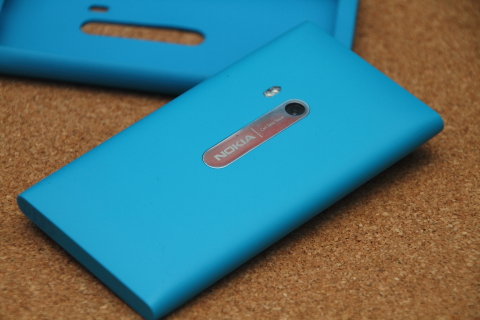 The back side is flat and smooth with the 8MP camera right in the middle and surrounded with a metallic strip. The camera flash is beside it but a bit flushed to the left side. The display at the front is made of hard, solid glass which is slightly embossed or protrudes off of the body (curved edge). This was purposely done by Nokia since it is integral to the navigation of the UI (we’ll come back to that later). The display screen is gorgeous, deep contrast with clean and crisp graphics. AMOLED and Nokia’s own CBD (Clear Black Display) worked their wonders on the N9.
The back side is flat and smooth with the 8MP camera right in the middle and surrounded with a metallic strip. The camera flash is beside it but a bit flushed to the left side. The display at the front is made of hard, solid glass which is slightly embossed or protrudes off of the body (curved edge). This was purposely done by Nokia since it is integral to the navigation of the UI (we’ll come back to that later). The display screen is gorgeous, deep contrast with clean and crisp graphics. AMOLED and Nokia’s own CBD (Clear Black Display) worked their wonders on the N9. 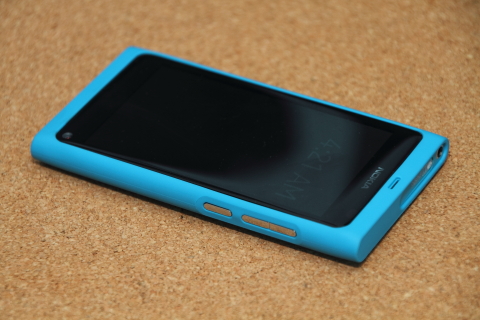 This is the first time we’ve tried and seen Meego running on a phone. In the Nokia N9, it’s Meego 1.2 Harmattan. It’s got a pretty slick and simple UI. It feels like a combination of the BlackBerry Playbook OS, Android Honeycomb and Apple’s iOS. You get three panels — the Feed Stream, App Drawer or Launcher and the Running Apps Deck. You scroll thru the panels/windows by swiping left or right. There’s no physical buttons on the screen and all the navigation you need is via gestures from the edges of the glass display (the curved edges of the glass helps in providing some tactile feedback).
This is the first time we’ve tried and seen Meego running on a phone. In the Nokia N9, it’s Meego 1.2 Harmattan. It’s got a pretty slick and simple UI. It feels like a combination of the BlackBerry Playbook OS, Android Honeycomb and Apple’s iOS. You get three panels — the Feed Stream, App Drawer or Launcher and the Running Apps Deck. You scroll thru the panels/windows by swiping left or right. There’s no physical buttons on the screen and all the navigation you need is via gestures from the edges of the glass display (the curved edges of the glass helps in providing some tactile feedback). 
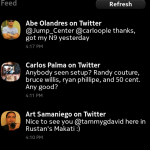
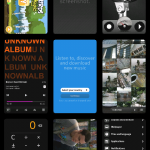 All opened apps are displayed on the Running Apps panel and you can individually close each app by pressing down on a window and tapping on the close (x) icon. There’s a “Close All" button at the bottom if you want to flush all the running apps. Some of the more common gesture commands include:
All opened apps are displayed on the Running Apps panel and you can individually close each app by pressing down on a window and tapping on the close (x) icon. There’s a “Close All" button at the bottom if you want to flush all the running apps. Some of the more common gesture commands include:
- Swipe up to return to home screen (app Drawer).
- Swipe down to close app.
- Double-tap screen to turn on display (instead of the lock button).
- Swipe left or right to switch screen/window.
- Tap top middle of display to show status and notifications.
- Half-swipe upwards to show most commonly used apps/functions.
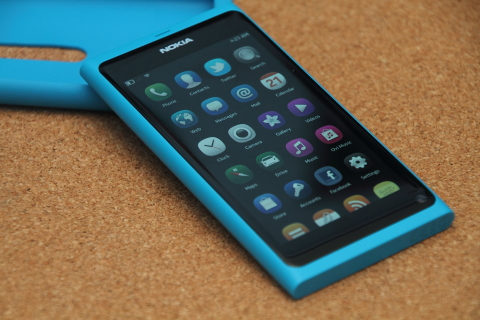 Performance of the Nokia N9 is pretty impressive. The UI looks fresh and responsive, the screen reacts to gesture smoothly and fluidly and apps run fairly quick. Even after launching over half a dozen apps, you will not notice any lag. It’s when you hit over 12 running apps that responsiveness tend to degrade a little bit. For the two weeks that I’ve been using it, I never encountered that freezing moment that we’d normally experience with all Android handsets. As I said in my previous entry, the N9 has the energy of a WP7 phone, the flair of an iPhone and the genes of an Android handset. Most apps in the background aren’t actually running but are put in a Suspended State — camera goes on standby mode and games are paused (i.e. a thrown Angry Bird freezes in mid-air if you fire it and switched apps). Apparently, the built-in browser still load pages even at the background as well as music playback. The native browser is pretty basic and does not support Flash or Javascript. The default page looks pretty neat though — shows up all the recent sites and most visited pages in a tag cloud of sorts.
Performance of the Nokia N9 is pretty impressive. The UI looks fresh and responsive, the screen reacts to gesture smoothly and fluidly and apps run fairly quick. Even after launching over half a dozen apps, you will not notice any lag. It’s when you hit over 12 running apps that responsiveness tend to degrade a little bit. For the two weeks that I’ve been using it, I never encountered that freezing moment that we’d normally experience with all Android handsets. As I said in my previous entry, the N9 has the energy of a WP7 phone, the flair of an iPhone and the genes of an Android handset. Most apps in the background aren’t actually running but are put in a Suspended State — camera goes on standby mode and games are paused (i.e. a thrown Angry Bird freezes in mid-air if you fire it and switched apps). Apparently, the built-in browser still load pages even at the background as well as music playback. The native browser is pretty basic and does not support Flash or Javascript. The default page looks pretty neat though — shows up all the recent sites and most visited pages in a tag cloud of sorts. 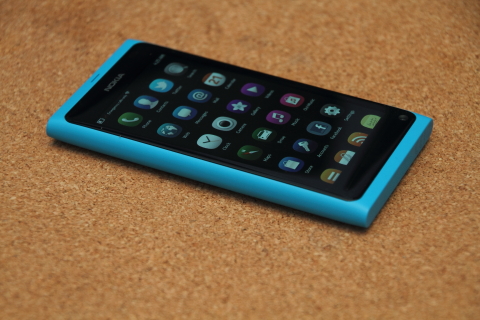 We have to give props to Nokia for really optimizing Meego to run on the N9′s hardware specs even if it’s somewhat dated (same chip as the Galaxy SL and Optimus Black). Nokia N9 specs: 3.9″ AMOLED screen @ 854×480 pixels ARM Cortex-A8 OMAP3630 1.0 GHz PowerVR SGX530 1024MB RAM 16GB and 64GB internal storage Bluetooth 2.1 WiFi 802.11 b/g/n 3G/HSDPA 14.4Mbps Near Field Communication (NFC) 8MP autofocus camera with Carl Zeiss optics (f/2.2 aperture) 720p HD video recording @ 30fps with stereo sound 2 x LED flash 2nd front-facing camera for video calls 1450mAh battery Meego 1.2 Harmattan There’s no microSD card slot for storage expansion but Nokia gave an option for a 64GB variant which should satisfy those looking for bigger space. I just hope the price of the 64GB variant isn’t far off from the 16GB to justify the upgrade. Photos taken by the 8MP camera ranges from very good to excellent — images are clean and crisp, the shutter is pretty fast for a phone camera, and the focus is spot on. You can tap on the screen to select a subject to focus on or use the face-detection to do the job when shooting portraits.
We have to give props to Nokia for really optimizing Meego to run on the N9′s hardware specs even if it’s somewhat dated (same chip as the Galaxy SL and Optimus Black). Nokia N9 specs: 3.9″ AMOLED screen @ 854×480 pixels ARM Cortex-A8 OMAP3630 1.0 GHz PowerVR SGX530 1024MB RAM 16GB and 64GB internal storage Bluetooth 2.1 WiFi 802.11 b/g/n 3G/HSDPA 14.4Mbps Near Field Communication (NFC) 8MP autofocus camera with Carl Zeiss optics (f/2.2 aperture) 720p HD video recording @ 30fps with stereo sound 2 x LED flash 2nd front-facing camera for video calls 1450mAh battery Meego 1.2 Harmattan There’s no microSD card slot for storage expansion but Nokia gave an option for a 64GB variant which should satisfy those looking for bigger space. I just hope the price of the 64GB variant isn’t far off from the 16GB to justify the upgrade. Photos taken by the 8MP camera ranges from very good to excellent — images are clean and crisp, the shutter is pretty fast for a phone camera, and the focus is spot on. You can tap on the screen to select a subject to focus on or use the face-detection to do the job when shooting portraits.  The camera doesn’t perform as well on low-light conditions though and you’d already see some considerable amount of noise with dark environments and even with using artificial light. Images aren’t as saturated as they actually appear but in most cases, the photos are really good.
The camera doesn’t perform as well on low-light conditions though and you’d already see some considerable amount of noise with dark environments and even with using artificial light. Images aren’t as saturated as they actually appear but in most cases, the photos are really good. 

 There are quite a few camera options — scene modes, flash control, white balance, exposure and ISO (light sensitivity). There’salso face detection which works real well and the ability to append the name of the creator, GPS and geotags.
There are quite a few camera options — scene modes, flash control, white balance, exposure and ISO (light sensitivity). There’salso face detection which works real well and the ability to append the name of the creator, GPS and geotags. 

 You can check the raw images here. Video is equally great although it only captures up to 720p. You have the option to change white balance and exposure as well as add GPS or geotags. Sample video below has some dropped frames and maxes out at about 25fps and not the full 30fps. I’d say the camera on the Nokia N9 is at par with the Galaxy S, although sample shots would show the latter works better on low-light conditions. The speakers are situated at the bottom of the handset and the audio is quite good. Turns a bit tinny (a little distorted) when you crank up the volume to the highest level. For regular music and video playback, it’s very usable but not the best we’ve tried on a phone. Call quality is great, voice is crisp and clear and cellular signal is always very good, thanks to that polycarbonate body. Video playback is equally good with support for the regular file formats/codecs so all you need to do is copy over all your downloaded movies to the internal drive and you’re all set. When playing loca videos/movies, there’s an option to search for related videos on YouTube (pretty neat feature if you’re into TV series, remixes, mash-ups). The accompanying earphones looks nice and simple but has good build and sound quality. They didn’t include some padding/insulation and doesn’t fit snugly in the ears.
You can check the raw images here. Video is equally great although it only captures up to 720p. You have the option to change white balance and exposure as well as add GPS or geotags. Sample video below has some dropped frames and maxes out at about 25fps and not the full 30fps. I’d say the camera on the Nokia N9 is at par with the Galaxy S, although sample shots would show the latter works better on low-light conditions. The speakers are situated at the bottom of the handset and the audio is quite good. Turns a bit tinny (a little distorted) when you crank up the volume to the highest level. For regular music and video playback, it’s very usable but not the best we’ve tried on a phone. Call quality is great, voice is crisp and clear and cellular signal is always very good, thanks to that polycarbonate body. Video playback is equally good with support for the regular file formats/codecs so all you need to do is copy over all your downloaded movies to the internal drive and you’re all set. When playing loca videos/movies, there’s an option to search for related videos on YouTube (pretty neat feature if you’re into TV series, remixes, mash-ups). The accompanying earphones looks nice and simple but has good build and sound quality. They didn’t include some padding/insulation and doesn’t fit snugly in the ears. 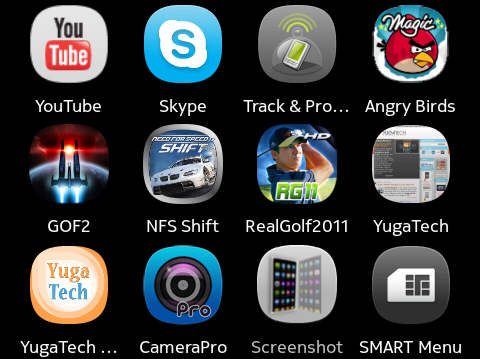 Gaming is also another strong suit for the N9 — games like Angry Birds, Need For Speed Shift and Galaxy on Fire 2 run smoothly and flawlessly. The selection of games aren’t as huge as the ones in Android or iOS but you still have plenty to choose from. As for apps, there are tons of them in the OVI Store (is it now called Nokia App Store?) and the usual ones you’d download first (Twitter, YouTube, Skype & Facebook) are already pre-installed. WiFi hotspot is also present and pre-installed, c/o JoikuSpot. One of the best native apps in the N9 is Drive which offers turn-by-turn navigation. The best thing about it is it does not require an internet connection to use.
Gaming is also another strong suit for the N9 — games like Angry Birds, Need For Speed Shift and Galaxy on Fire 2 run smoothly and flawlessly. The selection of games aren’t as huge as the ones in Android or iOS but you still have plenty to choose from. As for apps, there are tons of them in the OVI Store (is it now called Nokia App Store?) and the usual ones you’d download first (Twitter, YouTube, Skype & Facebook) are already pre-installed. WiFi hotspot is also present and pre-installed, c/o JoikuSpot. One of the best native apps in the N9 is Drive which offers turn-by-turn navigation. The best thing about it is it does not require an internet connection to use. 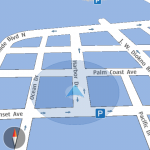
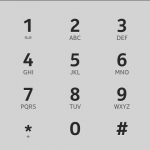
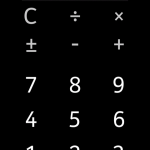 The numeric keypad and the virtual qwerty keyboard is well-spaced and easy to use. Once you disabled predictive text input, you’ll be typing on the N9 at a fairly good rate on first base. The haptic feedback also helps with the pace. Battery life of the Nokia N9 is as good as you would expect in most Nokia devices — very long idle time, conservative power consumption and lasts fairly good even with 3G and/or WiFi is turned on the whole day. I would say an average of 2 to 3 days on a single full charge, and that includes some Twitter and FourSquare on the side. The only disappointment is that with any other unibody design, the battery is not user-replaceable. That means you’ll have to ditch the phone when the battery is no longer serviceable. For a first-time Meego device, the Nokia N9 is nothing short of impressive. Good build quality, nice simple design, great multimedia performance and a pretty capable shooter. And I have to admit, the N9 has certainly gotten my two thumbs up. I’d even dare to say that Meego works better than WP7 and they should just have used it for their flagship smartphones instead of partnering with Microsoft. That’s based from experience of using the HTC HD7 running Windows Phone 7 for a year. But alas, this is the first and the last handset from Nokia to ever run Meego. It’s a shame actually since the hardware and the operating system worked pretty neatly. Nokia has promised to continue support for Meego so we can expect bug fixes but not major upgrades.
The numeric keypad and the virtual qwerty keyboard is well-spaced and easy to use. Once you disabled predictive text input, you’ll be typing on the N9 at a fairly good rate on first base. The haptic feedback also helps with the pace. Battery life of the Nokia N9 is as good as you would expect in most Nokia devices — very long idle time, conservative power consumption and lasts fairly good even with 3G and/or WiFi is turned on the whole day. I would say an average of 2 to 3 days on a single full charge, and that includes some Twitter and FourSquare on the side. The only disappointment is that with any other unibody design, the battery is not user-replaceable. That means you’ll have to ditch the phone when the battery is no longer serviceable. For a first-time Meego device, the Nokia N9 is nothing short of impressive. Good build quality, nice simple design, great multimedia performance and a pretty capable shooter. And I have to admit, the N9 has certainly gotten my two thumbs up. I’d even dare to say that Meego works better than WP7 and they should just have used it for their flagship smartphones instead of partnering with Microsoft. That’s based from experience of using the HTC HD7 running Windows Phone 7 for a year. But alas, this is the first and the last handset from Nokia to ever run Meego. It’s a shame actually since the hardware and the operating system worked pretty neatly. Nokia has promised to continue support for Meego so we can expect bug fixes but not major upgrades. 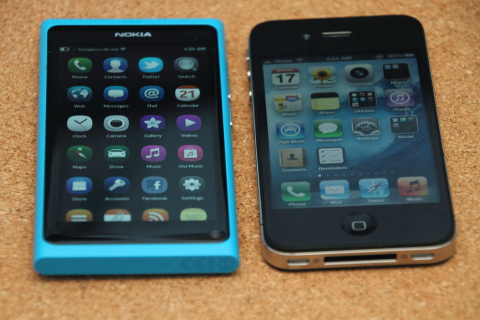 The Nokia N9 is not yet officially released in the Philippines and we still don’t have an idea what the suggested retail price will be. Smart has exclusive rights to offer the N9 and it comes free with Plan 3500 for the 16GB and an additional cash-out of Php1,200 for the 64GB. Seems a bit steep, IMHO. Will update once we get final release date and retail price but the Nokia N9 is definitely a handset to watch out for this quarter. — Yugatech
The Nokia N9 is not yet officially released in the Philippines and we still don’t have an idea what the suggested retail price will be. Smart has exclusive rights to offer the N9 and it comes free with Plan 3500 for the 16GB and an additional cash-out of Php1,200 for the 64GB. Seems a bit steep, IMHO. Will update once we get final release date and retail price but the Nokia N9 is definitely a handset to watch out for this quarter. — Yugatech 




